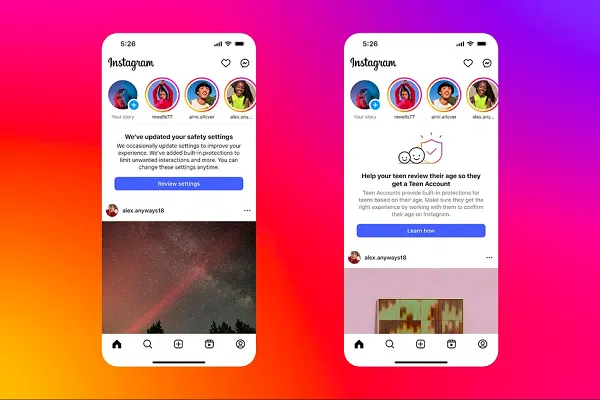7 Link Building Tips For Beginners via @sejournal, @BibiBuzzCom
If you add these prospecting angles to your prospecting toolkit, you end up with a varied collection of prospects. The post 7 Link Building Tips For Beginners appeared first on Search Engine Journal.

I know, my poor link builder n00bs.
It’s brutal out there. But I got you!
I’m Bibi the Link Builder and I’ve been building backlinks since the days of yore.
I’ve trained a horde of wide-eyed newbies for my agency and other link builder teams, so I know what you’re going through.
Let me share my seven nuggets that will make your first link building ride a bit smoother.
1. Manage Expectations
Link building can be hard, especially if you’re not buying links or using existing link partnerships. It can take weeks or even months before your campaigns gain momentum.
So it’s important that you don’t lose hope, and keep tweaking and trying.
If you’re dealing with other stakeholders, it’s very important they’re aware of this too.
You need a lot of headspace and time to learn what works and what doesn’t, and stakeholders breathing down your neck will not help.
So before you start, make sure everyone involved is okay with failing and is eager to learn and experiment – including you.
2. Focus First
Look, all marketers like shiny new things, and SEO pros are no exception.
But, especially for beginners, it’s better to focus on one link building tactic at a time.
Your results will not only depend on the tactic you’ve chosen, but they will equally depend on the quality of execution.
Here’s why you need to focus:
If you try too many methods at once, you won’t be able to execute any of them well enough to be successful. You’ll be more likely to make mistakes if you’re method-hopping. It will be harder to track your results and see what’s working and what’s not.Start with the link building tactic that looks easiest for you. Try it out and see how it goes.
Once you have a system that works for you, you can delegate it to a team member.
If the tactic doesn’t work or you have it systemized to perfection, start testing other stuff.
3. Start With Flexible Goals
It is common practice to define clear goals for your link building campaigns. This helps you measure your success and track your progress.
However, when you are starting out, it’s also okay to not have super clear goals.
Maybe your goal is simply to learn how to do link building and see what it does for your business.
This is a perfectly valid goal, and it can help you get started with link building from a more open perspective. You will fail forward and will be able to experiment more.
Once you have a better understanding of link building, you can start to set more specific goals.
For example, you might want to increase your website’s organic traffic by 10% or get 100 new backlinks in the next month.
4. Use Your Existing Network
I can’t believe I’m adding this tip here, as it’s so freakin’ obvious. But even the most experienced link builders sometimes leave these links on the table.
When you begin building links, please start with low-hanging fruit like this.
Just because it’s easy doesn’t mean there can’t be some heavy-duty gems in there!
So make a list of all areas where you (and your colleagues!) have existing connections. Here are some examples:
Friends and family (duh). Your software suppliers. Other suppliers and providers. Local companies and organizations. Your alumni network. Events.Once you have a list of connections, shoot them a quick message about links. Don’t overthink it.
5. Practice With Bespoke Emails First
A bespoke email is an email that is specifically written for one prospect.
When they read the email, they should understand this was only written for them and no one else.
You can use whatever elements you want to show that it’s unique for them.
Writing bespoke emails may sound like a lot of work, but it’s a great way to train yourself to write better templates.
Bespoke email begets templates.
A big part of link building is based on outreach, and a lot of that outreach is done through templated emails.
Templates can be very effective, but you need to learn how to create good ones that actually get results. Otherwise, you’ll be stuck copying or buying templates from others, which can be expensive and time-consuming.
Often, a targeted template that uses your link prospect’s jargon and shows an understanding of their pain points, interests, and wants works best.
It will convert much better than a generic template that uses typical link builder phrases. Unless you’re straight up offering to buy links, of course (and no shame in that either!).
So why start with bespoke emails?
I always ask my trainees to write 5 to 10 bespoke emails first because it will force them to do 3 things:
Break out of the “corporate” box of a professional email should sound like. Really think about the value proposition: Why would the prospect add the link? What’s in it for them? Do a deep dive into one prospect and identify similarities between different prospects.Working on unique outreach emails gives you a better understanding of what resonates with your prospects.
Once you’ve written a few bespoke emails, you’ll start to see a pattern emerge. You’ll notice which elements are most effective and which ones aren’t.
This will help you to create targeted templates for similar prospects.
6. Relevancy Can Be Stretchy
Besides winning links that bring in traffic and make those sales happen, you can think beyond just what your potential customers want.
Consider what your audience is like and what other stuff they’re into. Simply put, where else are they hanging out online?
Let me give you an example:
Let’s say you’re a luxury real estate broker. Your obvious targets are real estate sites, as they rank on relevant keywords and have an audience that’s looking to buy.
But all your competitors are thinking along the same lines, making it hard to get links from those sites. You should still go for that obvious angle, of course.
But you can also widen your scope, so you can get links from prospects that are not spammed to death by your competition. For instance, these prospects could work too:
Luxury car dealerships. Private jet companies. Fine art dealerships. Interior design firms. Panic room installers. Security companies. High-end travel agencies.This “stretching” can be used for prospecting angles, i.e., who you will reach out to. But it can also be used for linkable assets for active link building and passive link building.
An example is statistics pieces. A stats piece is a simple compilation of your and other peoples’ statistics around a certain topic, industry, and/or niche.
The audience of such a piece is not your customers; it’s the people who write for your customers and/or your prospects.
Those publishers need to do their homework, and your stats piece saves them time scouring for facts online. So they grab some of the facts you mentioned, write the piece, and refer to you as a source.
You can boost these pieces by actively building outreach links to them or running ads for them. But at some point, they will start attracting links on their own.
Check out Stacey Macnaughts’ talks and articles around these stats pieces; she’s the ultimate queen of stats pieces!
7. Multifaceted Prospecting
When you’re just starting out with prospecting, you usually begin with one of two approaches: competitor backlinks or targeted keywords.
In the first approach, you examine the backlinks of your direct or indirect competitors and reach out to those websites or similar ones.
When prospecting based on targeted keywords, you search for sites that rank for the keywords you want to target and reach out to them. You can also check their backlink profiles and hit up those prospects.
These two approaches are important, and you should definitely do them. But remember, your competitors are doing the same thing.
So, if you want to make your prospecting more creative, find out what kinds of websites and companies your audience likes. Then, create a list of prospects from that group.
This way, you can discover new opportunities and reach more people.
For instance, if you’re a coffee roaster, you could list all companies that have (part of) your audience:
Coffee enthusiasts. Offices. Hotels. Coffee shops. Home roasters. Gift shops. Online retailers. Wholesale distributors.Tip for smart and lazy people (my fave!): Ask Bard or Gepetto to help you brainstorm these lists.
You could create separate prospect lists of these types of companies. Then reach out with a themed email that resonates with that specific group.
You can also make another relevancy hop and research which companies cater to the companies from your first list.
So, for instance, when you think of hotel owners as an audience for coffee roasters, these are non-competing companies targeting that same group:
POS systems. Housekeeping supplies companies. Loyalty programs. Property management systems. Booking engines.If you add these prospecting angles to your prospecting toolkit, you end up with a varied collection of prospects.
It can also open your eyes to other types of collaborations with companies that share your customer base but are not competing with you.
In Summary
These are the final words for my sweet n00by link building babies.
Screw conformity! In link building (and life), be your unapologetic self.
Ditch the “proper and professional” corporate stuff.
Embrace your style, trust your gut, and don’t copy others. Experiment, have a blast, and own your unique approach.
More resources:
Can Link Building Give You Or Your Client A Bad Reputation? How To Use HARO For Link Building And PR The Dark Side Of Link BuildingFeatured Image: Lightspring/Shutterstock

 JimMin
JimMin 































